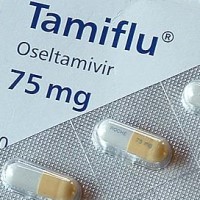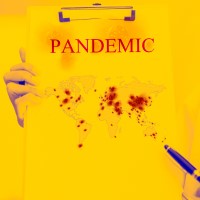HHS awarded a contract for $97 million to Sanofi Pasteur to develop cell culture-based influenza vaccines for the U.S.
On Apr. 1, 2005, Sanofi pasteur was awarded a five-year $97 million contract from the U.S. Department of…

On Apr. 1, 2005, Sanofi pasteur was awarded a five-year $97 million contract from the U.S. Department of…

In 2005 and 2006, the White House Homeland Security Council outlined the National Strategy for Pandemic Influenza to…

On Aug. 25, 2004, a significant shortage of influenza vaccine occurred in the U.S. as a result of…

On May 27, 2004, the National Institute of Allergy and Infectious Diseases (NIAID) announced it had awarded contracts…

On Oct. 15, 2003, the Immunization Practices Advisory Committee (ACIP) voted to recommend that children 6 to 23…

On Jun. 17, 2003, the first nasally administered influenza vaccine (FluMist by MedImmune) was licensed. This live influenza…

In 2003, public health officials reported the re-emergence of H5N1 avian influenza for the first time since an…

On Jan. 1, 2003, the Advisory Committee on Immunization Practices (ACIP) encouraged that children 6 to 23 months…

On Oct. 27, 1999, Hoffmann-La Roche and Gilead Sciences announced that Roche’s TAMIFLU (oseltamivir phosphate) had been approved…

On Oct. 27, 1999, Hoffmann-La Roche and Gilead Sciences announced that Roche’s TAMIFLU™ (oseltamivir phosphate) has been approved…

In April 1999, a pandemic planning framework was published by the World Health Organization (WHO) that emphasized the…

In 1998, the U.S. Department of Agriculture (USDA) began surveillance of swine for influenza virus in the U.S….

In 1997, FluNet, a global web-based tool for influenza virological surveillance was launched. It is a critical tool…

In 1997, the H5N1 bird flu incident in Hong Kong was the first known instance of a purely…

On Oct. 2, 1996, the Food and Drug Administration (FDA) licensed a combined Hib conjugate and hepatitis B…

In 1996, A/goose/Guangdong/1/1996 (H5N1), the precursor of the highly pathogenic H5N1 avian influenza viruses (HPAIVs) was identified in…

In 1995, the Immunization Practices Advisory Committee (ACIP), American Academy of Pediatrics, and the American Association of Family…

In 1994, Rimantadine, derived from amantadine, was approved by the Food and Drug Administration (FDA) to treat influenza…
On May 1, 1993, the costs of influenza vaccine and its administration became a covered benefit under Medicare…

On Mar. 30, 1993, the U.S. Food and Drug Administration (FDA) approved a new Haemophilus b conjugate vaccine,…

On Mar. 1, 1993, the combined Haemophilus influenzae type b vaccine and whole cell DTP vaccine (Tetramune by…

In 1993, the U.S. Centers for Disease Control and Prevention (CDC) responded to the H5N1 avian flu outbreak…

On Dec. 13, 1990, the U.S. Food and Drug Administration (FDA) approved Haemophilus b Conjugate Vaccine (Meningococcal Protein…

On Oct. 4, 1990, the FDA approved the use of Haemophilus b Conjugate Vaccine (Diphtheria CRM 197 Protein…

On Dec. 21, 1988, the conjugated Haemophilus influenzae type b vaccine (HibTITER by Wyeth-Lederle) was licensed. Prior to…

On Jun. 25, 1988, the U.S. Postal Service (USPS) proposed to ban mailings of microbe samples capable of…

On Dec. 22, 1987, the protein-conjugated Haemophilus influenzae type b vaccine (PRP-D, ProHibit by Connaught) was licensed.

In 1986, The National Childhood Vaccine Injury Act (PDF – 312 KB), as amended, created the National Vaccine Injury…

On Apr. 12, 1985, the Haemophilus influenzae type b (Hib) polysaccharide vaccines (b-CAPSA 1 by Praxis Biologics, Hib-VAX…

In 1981, the U.S. Centers for Disease Control and Prevention (CDC) began collecting reports of influenza outbreaks from…